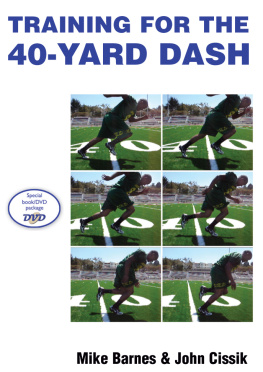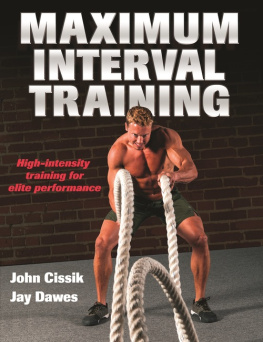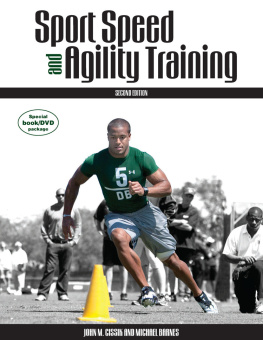Michael Barnes - Training for the 40-Yard Dash
Here you can read online Michael Barnes - Training for the 40-Yard Dash full text of the book (entire story) in english for free. Download pdf and epub, get meaning, cover and reviews about this ebook. year: 2007, publisher: Coaches Choice, genre: Romance novel. Description of the work, (preface) as well as reviews are available. Best literature library LitArk.com created for fans of good reading and offers a wide selection of genres:
Romance novel
Science fiction
Adventure
Detective
Science
History
Home and family
Prose
Art
Politics
Computer
Non-fiction
Religion
Business
Children
Humor
Choose a favorite category and find really read worthwhile books. Enjoy immersion in the world of imagination, feel the emotions of the characters or learn something new for yourself, make an fascinating discovery.
- Book:Training for the 40-Yard Dash
- Author:
- Publisher:Coaches Choice
- Genre:
- Year:2007
- Rating:4 / 5
- Favourites:Add to favourites
- Your mark:
- 80
- 1
- 2
- 3
- 4
- 5
Training for the 40-Yard Dash: summary, description and annotation
We offer to read an annotation, description, summary or preface (depends on what the author of the book "Training for the 40-Yard Dash" wrote himself). If you haven't found the necessary information about the book — write in the comments, we will try to find it.
Training for the 40-Yard Dash — read online for free the complete book (whole text) full work
Below is the text of the book, divided by pages. System saving the place of the last page read, allows you to conveniently read the book "Training for the 40-Yard Dash" online for free, without having to search again every time where you left off. Put a bookmark, and you can go to the page where you finished reading at any time.
Font size:
Interval:
Bookmark:
Michael Barnes is the owner of Infinity Personal Training and Fitness. He has been a strength and conditioning practitioner and educator in the field for more than 15 years. He holds a masters degree in health and human performance from Auburn University and certifications from the National Strength and Conditioning Association (Certified Strength and Conditioning Specialist with Distinction and Certified Personal Trainer with Distinction) and the International Society on Sports Nutrition (Certified Sports Nutritionist).
Michael has coordinated books and videos and has presented at many conferences on strength and conditioning. Projects in which he has participated include work done with USA Cycling, USA Judo, USA Rugby, the National Athletic Trainers Association, the National Strength and Conditioning Association, the American College of Sports Medicine, and the United States Marine Corps.
Michaels past experience includes six years with the San Francisco 49ers as their strength development coordinator. He has traveled the world, visiting such places as Japan, Australia, Puerto Rico, Bermuda, Greece, and Denmark, educating and training athletes and interacting with leaders in the fitness industry.
John Cissik is the director of fitness and recreation at Texas Womans University and is the owner of Fitness and Conditioning Enterprises, which specializes in providing speed and agility instruction to young athletes. John also serves as strength and conditioning consultant with several track and field teams.
John holds a masters degree in kinesiology from Texas A&M University and several certifications from the National Strength and Conditioning Association (Certified Strength and Conditioning Specialist with Distinction, NSCA-Certified Personal Trainer with Distinction), USA Track and Field (Level II Coach Sprints, Level I Coach), and USA Weightlifting (Club Coach).
John has been very active in the strength and conditioning field for a number of years. He has held a variety of positions, from coaching to teaching to personal training. He has written several books on strength and speed training, as well as many coaching and lay articles, has done several videos, and has given many presentations. He has served as a reviewer for the NSCAs Strength and Conditioning Journal, as well as several of its educational products. He also served as the NSCAs State Director for Texas from 20012004.
for the
40-Yard Dash
Michael Barnes
John Cissik
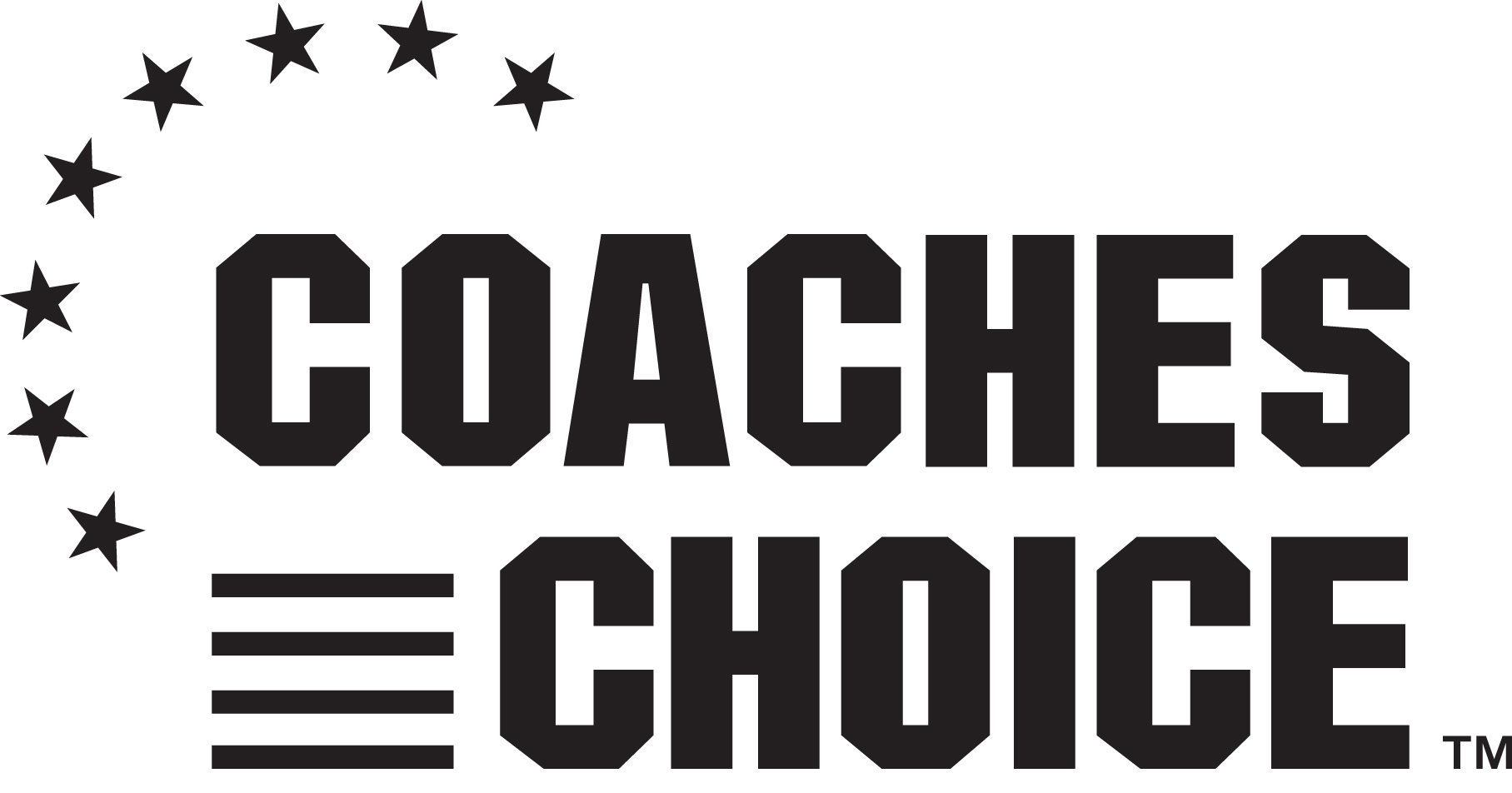
2008 Coaches Choice. All rights reserved. Printed in the United States.
No part of this book may be reproduced, stored in a retrieval system, or transmitted, in any form or by any means, electronic, mechanical, photocopying, recording, or otherwise, without the prior permission of Coaches Choice.
ISBN: 978-1-58518-059-2
Library of Congress Control Number: 2007933804
Book layout: Bean Creek Studio
Cover design: Bean Creek Studio
Front cover photo: Brennan Tiffany
Text photos: Michael Barnes
Coaches Choice
P.O. Box 1828
Monterey, CA 93942
www.coacheschoice.com
To Sue, Zachary, and Sydney. Why run when you can fly?
Mike Barnes
To attempt to acknowledge the many people that deserve my gratitude would be impossible. The people that I have worked for and with are countless and I have learned something from each of them.
I would like to thank Shane Domer, Keith Cinea, Robin Pound, Eric Hohn, Jerry Attaway, Dwight Clark, George Seifert, Steve Mariucci, Peter Melanson, Steve Plisk, Mike Miller, John Graham, Scott Reiwald, William Kraemer, Dave Sandler, John Taylor, Jay Hoffman, Kevin Clearly, Charles Ash, Ben Reuter, Mark Stephanson, Allen Hedrick, Virginia Meier, Karrie Baker, Tom Hastings, Scott Brone, Avery Faigenbaum, Bob Alejo, Tom Billups, Mike and Lori Chaplin, Jay Dawes, Jeremy Strom, Dave Ellis, Paul Goldberg, Tom Grace, and the hundreds of coaches and athletes that I have had the privilege to work with over many years.
I would like to specifically thank my good friend and co-author, John Cissik. He has inspired me to become a better practitioner and to truly base coaching and education on scientific principles.
Mike Barnes
The 40-yard dash, or 40, is perhaps the most highly evaluated performance criteria among coaches throughout the country. A good time can determine who makes the high school football team or how high an athlete is selected in the NFL draft. During our years of coaching, we have collected our observations about several aspects of the 40, including biomechanics, weight training, plyometrics, and ultimately running a faster time. It is our pleasure to share these training techniques and tips, which will maximize your training time and give your athletes the best possible results.
This manual is intended for coaches working with athletes who are interested in running a faster 40 time. The majority of high school, collegiate, and professional athletes use the 40 as an off-season or preseason test to determine speed, fitness, improvement, and potentially the ability to play. It has been our observation that many of these athletes do not properly run or train to their potential.
Genetic potential plays a big part of running a fast 40, but with proper technique and training it is not uncommon for an athlete to reduce their 40 time by as much as 0.4 seconds. Some of the strategies that this book covers involve the fundamentals of biomechanics, physiology, the ever-important start position, body composition, weight training, plyometrics, and more.
The contents of the manual are based on science and its practical application. We didnt want to weigh the contents down with lots of cited research, but instead opted to focus on the essential information that would pertain to running the best possible time. The specifics of running the 40 are discussed, as well as assistive training techniques such as weight training and plyometrics. Body composition is critical to running fast as well, and so we decided to include that topic in our discussion of nutrition.
Three different programs are presented in the final chapter of this manualvarsity, All-American, and world class. It is important to note that athletes should only use the program that they are physical y ready for and prepared to commit to. The varsity program is for someone who wants to take two to four weeks to clean up their technique and be somewhat prepared to run a decent time. The Al American program is for a consistently training athlete who has some training background and is serious about committing several weeks to improving performance. Final y, the world class program is for an athlete who has consistent training habits, at least a year of experience, and must run their personal best. These programs represent our recommendations on exactly how to train for the 40.
If your athletes are committed to improving on a decent time or blowing away the NFL scouts with lightning speed, this manual will accommodate your coaching needs. Good luck.
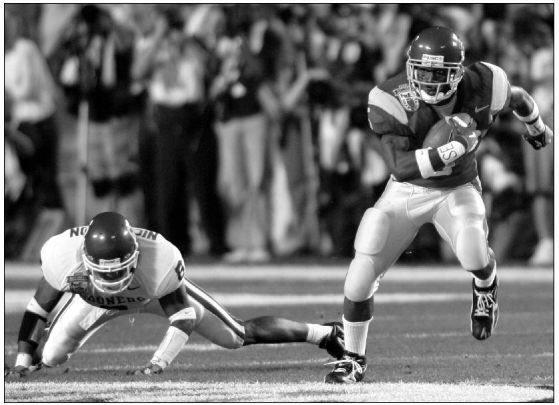

The 40-yard dash, often simply called the 40, is a timed sprint over 40 yards. It is measured throughout the United States to determine the speed of athletes, specifically football players. Junior high school, high school, collegiate, and professional-level athletes are all measured in the 40-yard dash. Theoretically, the 40 can be correlated to the ability to play. To a certain extent, this correlation is real, but not necessarily at higher levels of competition.
Font size:
Interval:
Bookmark:
Similar books «Training for the 40-Yard Dash»
Look at similar books to Training for the 40-Yard Dash. We have selected literature similar in name and meaning in the hope of providing readers with more options to find new, interesting, not yet read works.
Discussion, reviews of the book Training for the 40-Yard Dash and just readers' own opinions. Leave your comments, write what you think about the work, its meaning or the main characters. Specify what exactly you liked and what you didn't like, and why you think so.

